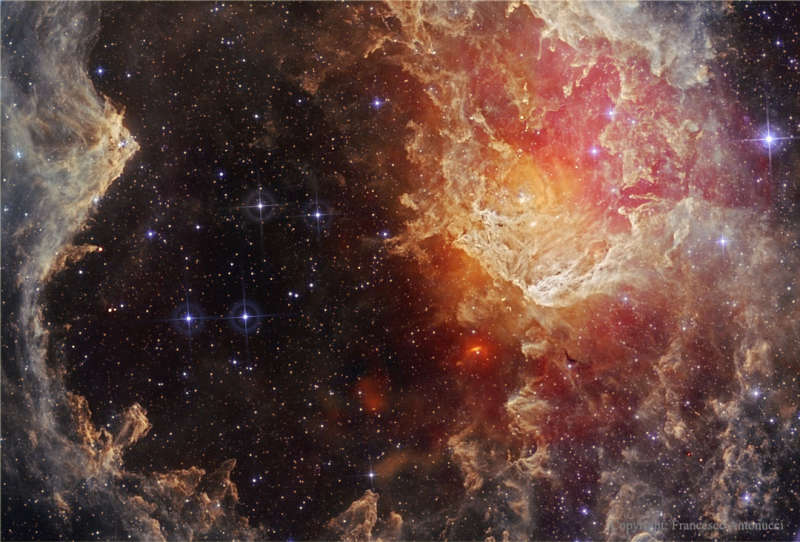Explanation: Young stars themselves are clearing out their nursery in NGC 7822. Within the nebula, bright edges and complex dust sculptures dominate this detailed skyscape taken in infrared light by NASA's Wide Field Infrared Survey Explorer (WISE) satellite. NGC 7822 lies at the edge of a giant molecular cloud toward the northern constellation Cepheus, a glowing star forming region that lies about 3,000 light-years away. The atomic emission of light by the nebula's gas is powered by energetic radiation from the hot stars, whose powerful winds and light also sculpt and erode the denser pillar shapes. Stars could still be forming inside the pillars by gravitational collapse, but as the pillars are eroded away, any forming stars will ultimately be cut off from their reservoir of star stuff. This field spans around 40 light-years at the estimated distance of NGC 7822.
Free APOD Lectures:
January 5 in NYC & January 9 in DC
1999 2000 2001 2002 2003 2004 2005 2006 2007 2008 2009 2010 2011 2012 2013 2014 2015 2016 2017 2018 2019 2020 2021 2022 2023 2024 2025 |
Январь Февраль Март Апрель Май Июнь Июль Август Сентябрь Октябрь Ноябрь Декабрь |
NASA Web Site Statements, Warnings, and Disclaimers
NASA Official: Jay Norris. Specific rights apply.
A service of: LHEA at NASA / GSFC
& Michigan Tech. U.
|
Публикации с ключевыми словами:
star formation - Туманности межзвездные - звездообразование
Публикации со словами: star formation - Туманности межзвездные - звездообразование | |
См. также:
Все публикации на ту же тему >> | |
